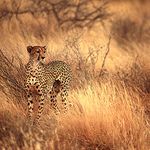- Home
- Lightroom Classic
- Discussions
- Re: how to clean thousands of blemishes from a pho...
- Re: how to clean thousands of blemishes from a pho...
Copy link to clipboard
Copied
I have about 50 slides mounted in glass with thousands of blemishes. I
have spent as long as 3 days removing blemishes from one photo. This involved cleaning up as much as I could until the fix markers got so crowded I couldn't continue, exporting the photo, importing the photo, and cleaning up more blemishes, repeating this cycle several times a day.
I have also cleaned up an area one blemish at a time, widened the spot removal brush and with the cleaned area as the source, used clone or heal to remove blemishes in other parts of the photo. This works best in areas with little detail, like a clear sky.
Is there a faster way in either PhotoShop or Lightroom, other than one blemish at a time, to clean up a photo?
 1 Correct answer
1 Correct answer
I imported your image in LrC, and first did some basic adjustments, to make it easier to work with the image.
I expanded the tonal range by setting Blacks to -23 and Whites to 75.
I then set Exposure to 0.40 to make it a bit brighter.
Then I went to Masking and chose Select sky, and set Clarity and Texture to -100.
This removed the majority of the black spots in the sky, and the rest were removed with the Healing brush.
All this took less than five minutes.
There's still some smaller spots lef
...Copy link to clipboard
Copied
Can you post a typical example here using the Insert Photos button in the forum toolbar?
Copy link to clipboard
Copied
Copy link to clipboard
Copied
Copy link to clipboard
Copied
Scratch reduction by itself didn't remove any significant number of blemishes. The problem with the photo is the blemishes, not scratches. I guess this photo hit Photo Restoration where it doesn't excel.
Copy link to clipboard
Copied
You may want to give the "Photo Restoration" neural filter in Photoshop a try.
Filter > Neural Filters..., then select Photo Restoration from the list in the right panel.
You can adjust "Scratch reduction".
It's in beta test but works well. I find the results are not perfect but it's a pretty good start.
As the name implies this is a neural net AI application which is optimized for NVidia GPU's. I think the filter still works if you don't have a GPU, but it will probably be very slow.
Copy link to clipboard
Copied
Thanks.
I'll try it. No Invidia hardware is in the computer. The operating system is Windows 11.
Copy link to clipboard
Copied
I imported your image in LrC, and first did some basic adjustments, to make it easier to work with the image.
I expanded the tonal range by setting Blacks to -23 and Whites to 75.
I then set Exposure to 0.40 to make it a bit brighter.
Then I went to Masking and chose Select sky, and set Clarity and Texture to -100.
This removed the majority of the black spots in the sky, and the rest were removed with the Healing brush.
All this took less than five minutes.
There's still some smaller spots left, and I would use the Spot Healing brush tool in Photoshop to remove these, and the most prominent spots in the landscape.
Copy link to clipboard
Copied
Here's the image before I selected the sky:
Copy link to clipboard
Copied
Per,
Thnks for the help. That removes about half blemishes. That helps a lot!
Copy link to clipboard
Copied
That's an impressive technique!
Copy link to clipboard
Copied
Per's appraoch worked quite well. In fact, I used it on some other photos that had similar problems that I've worked on since trying the technique.
Copy link to clipboard
Copied
I have spent as long as 3 days removing blemishes from one photo. This involved cleaning up as much as I could until the fix markers got so crowded I couldn't continue, exporting the photo, importing the photo, and cleaning up more blemishes, repeating this cycle several times a day.
By @bruceo62291541
No need to do that. Just turn off the tool overlay in the lower left corner below the image. Set it to 'Never', and the icons will not show on the image.
Copy link to clipboard
Copied
I tried using the neural filters->photo restoration option in Photoshop followed by a few spot healing applications. But it seemed to have lost some of the detail in the mountains. It reduced the amount of work but I don't think the results are that great. The feature has worked great on some old portraits for me.
Find more inspiration, events, and resources on the new Adobe Community
Explore Now




